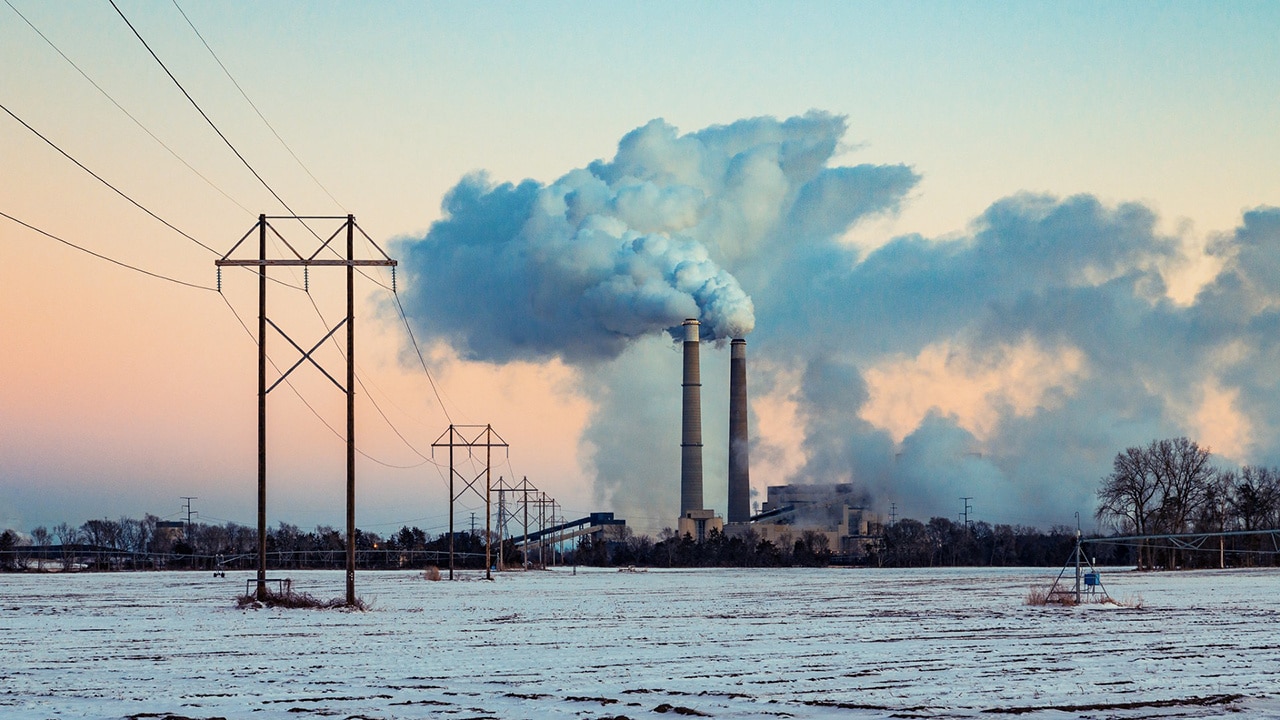

The Sherburne County generating station, a coal-fired power plant owned by Xcel Energy, in Becker, Minnesota. Tony Webster / CC BY 2.0
By Elizabeth Sawin
The next president will be inaugurated in the midst of a raging pandemic, an economic recession, a crisis of structural racism and an escalating climate emergency. The best chance for making progress on any of these issues is to tackle them all together.
That’s an approach called multisolving — ensuring that every dollar invested in solving one problem solves others at the same time. It’s the preferred approach when facing intersecting problems with tight budgets and an urgent timeline.
A COVID-19 economic recovery package will be one of the biggest opportunities to multisolve in 2021. A well-designed recovery could lock in decades of low-carbon emissions. It could reap the public health benefits that come along with replacing air-polluting energy sources with clean energy generation. And it could steer benefits, like good jobs that can’t be offshored, to the communities that have historically been left out of economic opportunity.
But multisolving doesn’t happen by accident. It happens by design. If the next administration wants to achieve four benefits — climate protection, economic recovery, health and equity — for the price of one, it will need to place multisolving at the center of its plans.
Nine months into the pandemic, there are bright spots around the world that show what might be possible if economic recovery investments were designed to achieve multiple goals. These can be found in small developing countries and in major economies. Their focus ranges from clean energy to ecosystem restoration to walking and cycling infrastructure.

Separated bike lane. Paul Krueger / CC BY 2.0
Here are a few cases drawn from a growing database of examples my colleagues and I are tracking:
- The Nigerian government is focusing on solar electricity as part of its recovery plan, with a goal of installing solar-generation capacity on 5 million homes;
- Spain has pinned its recovery on an “ecological transformation” including installing 100,000 electric vehicle charging stations, making 500,000 homes more energy efficient and accelerating progress toward its goal of 100% renewable electricity by 2050;
- A joint EU-Africa project will direct €300 million (4 million) to projects that help businesses in Sub-Saharan Africa, especially ones owned by women. At least 25% of the funds are for projects involving renewable energy, energy efficiency and climate change resilience;
- The United Kingdom has launched a £2 billion (.6 billion) plan to increase cycling infrastructure as part of its COVID-19 response. In the short term this will help people travel safely through the pandemic. In the long term it will reduce emissions from transportation and capture the health benefits of active travel.
Sadly, these bright spots are so far the exception, not the rule.
A study published last month in Science highlights the potential of this moment. Countries around the world have already committed trillion to economic recovery packages. If only 12% of that amount were to be invested in the next five years in clean energy and energy efficiency the world could place itself on a path to meeting the goals of Paris Climate Agreement, while also driving job opportunities and improving human health. But so far, the world as whole is falling short of even this modest amount of multisolving.
Some regions are doing well, though. In the European Union, for instance, somewhere between 19% to 30% of recovery investments are rated as “green.” But many other governments are allowing this opportunity to multisolve slip away. Estimates are that only 1% of U.S. recovery funding so far has been green. For China the estimate is 0.3%; for India it’s 2.4%.
With recovery plans still taking shape, and with many of the opportunities for investment on hold until the public health threat of the virus is under control, the window of opportunity has not yet closed. That is good news. The United States, under the incoming administration, could direct the funds needed to stimulate the economy in a way that simultaneously helps us meet climate, health and equity goals.
To ensure this quadruple benefit is captured, each element of a recovery plan will need to be designed with multiple criteria in mind. Policy makers should be asking questions such as:
- Does an energy infrastructure project lock in low carbon emissions while also providing good jobs?
- Does a particular investment include racial, gender and economic equity provisions to make sure benefits go to communities that have been left out of past opportunities?
- Are investments like home weatherization targeted towards low-wealth communities, where the resulting utility bill savings will make the most difference?
- Are job training, healthcare and childcare offered so that everyone can benefit from new employment opportunities?
Success will require sustained effort well beyond the design phase. It will require agencies to work together. Can an energy efficiency program coordinate with a jobs program? Can a cycling project be designed with input from housing and public health?
A true multisolving recovery will invest authority in local communities. While the federal government functions in silos, all the elements of carbon emissions, health, jobs, equity and well-being come together on the ground, at the grassroots level. Funding mechanisms will need to be flexible to allow communities to steer their own green and equitable recoveries.
That’s a tall order, and even the most effective multisolving recovery plan will not be enough if it focuses only within the United States. The transition to a zero-carbon future needs to be a global one. Rich nations like the United States can offer financial assistance so that all countries can recover in ways that are green, resilient and equitable.
The country and the world could emerge from the COVID-19 pandemic more resilient, more equitable, and on track to meet climate goals. But that won’t happen by accident. It’s time to start multisolving.
You can learn more about multisolving on Climate Interactive’s website, where you can also explore a database of green, resilient, equitable recovery measures being taken around the world.
The opinions expressed above are those of the author and do not necessarily reflect those of The Revelator, the Center for Biological Diversity or their employees.
Elizabeth Sawin is co-founder and co-director of Climate Interactive a think-tank that helps people find solutions to climate change and related issues like equity, health, food and water.
Reposted with permission from The Revelator.
- Canadian Groups Fight for a Just Covid-19 Recovery - EcoWatch
- New Zealand's Ardern Pledges 100% Renewable Energy by 2030 if ...
- German Business Leaders Call for Climate Action With COVID-19 ...
- How Australia Plans to Recycle its Way to Recovery After COVID-19 ...
- Coronavirus Economic Recovery to Drive Second-Highest CO2 Emissions Jump on Record, IEA Warns

 233k
233k  41k
41k  Subscribe
Subscribe 